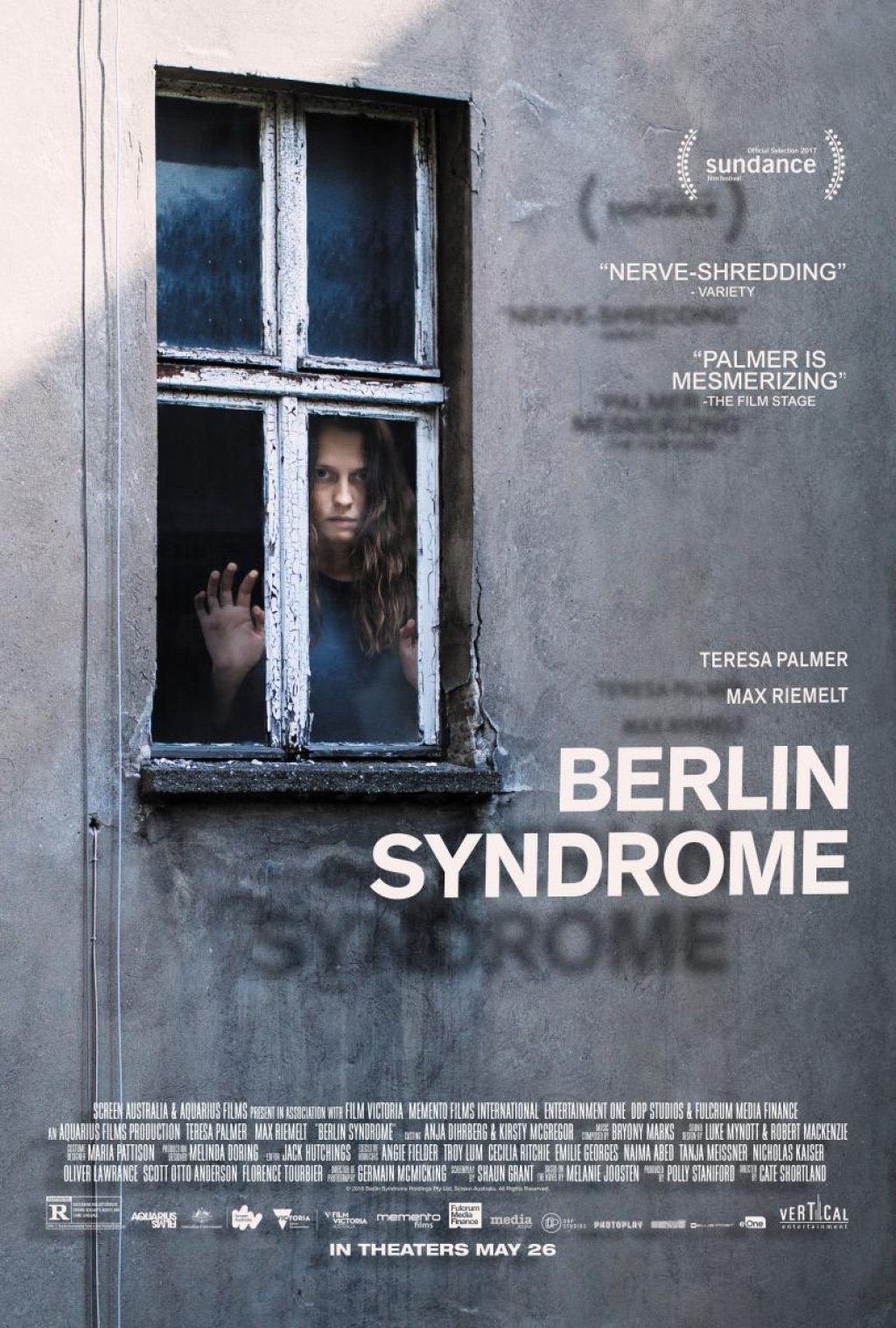What Is Sindrome De Berlin? Unveiling The Truth Behind This Phenomenon
Sindrome de Berlin: Understanding the Post-Unification Struggle
Introduction
Hello Berlin Visitors,
1 Picture Gallery: What Is Sindrome De Berlin? Unveiling The Truth Behind This Phenomenon

Welcome to the city where history and modernity collide. As you explore the streets, you might come across the term Sindrome de Berlin que es, which translates to Berlin Syndrome, what is it? In this article, we will delve into the depths of this syndrome, examining its origins, impact, and implications for the people of Berlin. Join us on this journey as we unravel the enigma of Sindrome de Berlin.
Overview

Image Source: filmaffinity.com
Before we dive into the specifics, let’s take a moment to understand the context. Sindrome de Berlin refers to the psychological and emotional struggle experienced by individuals living in Berlin post-reunification. The fall of the Berlin Wall in 1989 marked a historic moment, but it also brought forth a unique set of challenges for the city and its residents.
Now, let’s explore the various aspects of Sindrome de Berlin and gain a comprehensive understanding of this phenomenon.
What is Sindrome de Berlin?
🔎
Sindrome de Berlin is a term used to describe the psychological and emotional impact experienced by Berliners in the wake of the reunification of Germany. It encompasses a range of feelings, including nostalgia, loss, identity crisis, and a struggle to adapt to the rapid changes that followed the fall of the Berlin Wall.
🔎
The syndrome manifests differently in individuals, but it often involves a sense of longing for the divided city that once was. Berliners who lived through the separation of East and West Germany found themselves suddenly thrust into a new reality, one where the familiar landmarks and way of life were forever altered.
Who Does Sindrome de Berlin Affect?
🔎
Sindrome de Berlin can affect individuals from both East and West Germany, although the experiences may differ. For those from the East, there may be a sense of loss for the socialist system they grew up in, while those from the West may grapple with the changes brought by the influx of people and differing ideologies.
🔎
Additionally, the syndrome may also impact younger generations who did not directly experience the division of the city but still feel the remnants of it in their daily lives. The effects of Sindrome de Berlin can be felt across all age groups and social backgrounds.
When Did Sindrome de Berlin Emerge?
🔎
The emergence of Sindrome de Berlin can be traced back to the early 1990s, following the reunification of Germany. As the physical barriers between East and West Berlin were torn down, the psychological and emotional barriers began to surface. This period of transition and adaptation gave rise to the complex set of emotions that characterize the syndrome.
🔎
Decades later, Sindrome de Berlin still lingers in the hearts and minds of many Berliners, shaping their perspectives and influencing their sense of belonging.
Where Does Sindrome de Berlin Manifest?
🔎
Sindrome de Berlin manifests in various aspects of life in the city. From the architectural differences between the East and West to the socio-economic disparities, the syndrome is intricately woven into the fabric of Berlin. It can be observed in the contrasting lifestyles, political ideologies, and cultural attitudes that exist within the city.
🔎
While the physical division has been eradicated, the remnants of Sindrome de Berlin can still be found in the subtle nuances that distinguish the neighborhoods and communities of the city.
Why Does Sindrome de Berlin Persist?
🔎
Sindrome de Berlin persists because it represents more than just a physical divide. It symbolizes a clash of ideologies, a clash that continues to shape and define the city today. As Berliners navigate the path towards a unified identity, they must confront the ghosts of the past and reconcile the differences that still exist.
🔎
The persistence of Sindrome de Berlin also serves as a poignant reminder of the importance of preserving history and acknowledging the struggles faced by previous generations. By understanding and addressing the syndrome, Berlin can continue to grow and evolve, ensuring a brighter future for all its residents.
How Can Sindrome de Berlin Impact Individuals?
🔎
On an individual level, Sindrome de Berlin can have profound impacts on one’s sense of self, well-being, and relationships. It may lead to feelings of isolation, confusion, and a longing for the past. The changes brought by reunification can be overwhelming, and individuals may find themselves searching for a sense of belonging and stability.
🔎
However, Sindrome de Berlin also presents an opportunity for personal growth and resilience. By acknowledging and processing the emotions associated with the syndrome, individuals can forge a new identity, one that embraces the complexities of the past while embracing the possibilities of the future.
Advantages and Disadvantages of Sindrome de Berlin
🔎
Advantages:
1. Cultural Exchange: The reunification of Berlin has allowed for a rich and diverse cultural exchange, as people from different backgrounds come together and share their experiences.
2. Economic Growth: The reunification has created new opportunities for economic growth, attracting businesses and investments to the city.
3. Freedom of Movement: The removal of the Berlin Wall has granted individuals the freedom to explore and experience both sides of the city without any restrictions.
Disadvantages:
1. Socio-Economic Disparities: The reunification has highlighted socio-economic disparities between the former East and West Berlin, leading to inequalities and marginalization.
2. Identity Crisis: The sudden changes brought by reunification have left many individuals grappling with an identity crisis, as they try to reconcile their past with the present.
3. Loss of Nostalgia: The disappearance of familiar landmarks and way of life can invoke a sense of loss and nostalgia among those who cherished the divided Berlin.
Frequently Asked Questions (FAQs)
1. Is Sindrome de Berlin a medical condition?
No, Sindrome de Berlin is not a recognized medical condition. It is a term used to describe the psychological and emotional struggles experienced by individuals in Berlin post-reunification.
2. Can Sindrome de Berlin be overcome?
While the impact of Sindrome de Berlin may be long-lasting, individuals can find ways to overcome its effects through self-reflection, seeking support from others, and embracing the opportunities for growth and resilience.
3. Are there any support groups for individuals experiencing Sindrome de Berlin?
Yes, there are various support groups and resources available in Berlin for individuals who are navigating the complexities of Sindrome de Berlin. These groups provide a safe space for individuals to share their experiences and find support.
4. Does Sindrome de Berlin affect tourists visiting the city?
Sindrome de Berlin primarily affects individuals who have a personal connection to the city, such as residents or those who have lived through the reunification. However, tourists may also gain insight into the history and impact of the syndrome through cultural exhibits and guided tours.
5. Can Sindrome de Berlin be viewed as a positive phenomenon?
While Sindrome de Berlin brings forth challenges and struggles, it also represents an opportunity for growth, resilience, and cultural exchange. By acknowledging and addressing the syndrome, Berlin can continue to evolve and create a more inclusive and united future.
Conclusion
As we conclude our exploration of Sindrome de Berlin, we hope that you have gained a deeper understanding of this unique phenomenon. The struggles faced by Berliners post-reunification have shaped the city’s identity and continue to influence its future trajectory. Let us embrace the complexities of Sindrome de Berlin and work towards a more inclusive and harmonious Berlin. Together, we can bridge the divide and create a brighter future for all.
Thank you for joining us on this journey. Safe travels!
Final Remarks
🔔
Disclaimer: The information provided in this article is for educational and informational purposes only. The content does not constitute medical or psychological advice and should not be used as a substitute for professional consultation. Seek guidance from qualified professionals for any personal or emotional concerns related to Sindrome de Berlin or other psychological matters.
🔔
Note: This article is based on the author’s research and understanding of Sindrome de Berlin. The opinions and perspectives expressed in this article are subjective and may vary from individual to individual.
This post topic: Berlin



